Abstract
Nisin had an inhibitory effect on gram-positive bacteria (Listeria monocytogenes, Staphylococcus aureus, and Streptococcus lactis) but did not have an inhibitory effect on gram-negative bacteria (Serratia marcescens, Salmonella typhimurium, and Pseudomonas aeruginosa) attached to meat. Nisin delayed bacterial growth on meats which were artificially inoculated with L. monocytogenes or Staphylococcus aureus for at least 1 day at room temperature. If the incubation temperature was 5 degrees C, growth of L. monocytogenes was delayed for more than 2 weeks, and growth of Staphylococcus aureus did not occur. We also found that the extractable activity of nisin decreased rapidly when the meats were incubated at ambient temperatures and that this decrease was inversely related to the observed inhibitory effect. These findings disclosed that nisin delays the growth of some gram-positive bacteria attached to meat. However, nisin alone may not be sufficient to prevent meat spoilage because of the presence of gram-negative and other nisin-resistant gram-positive bacteria.
Full text
PDF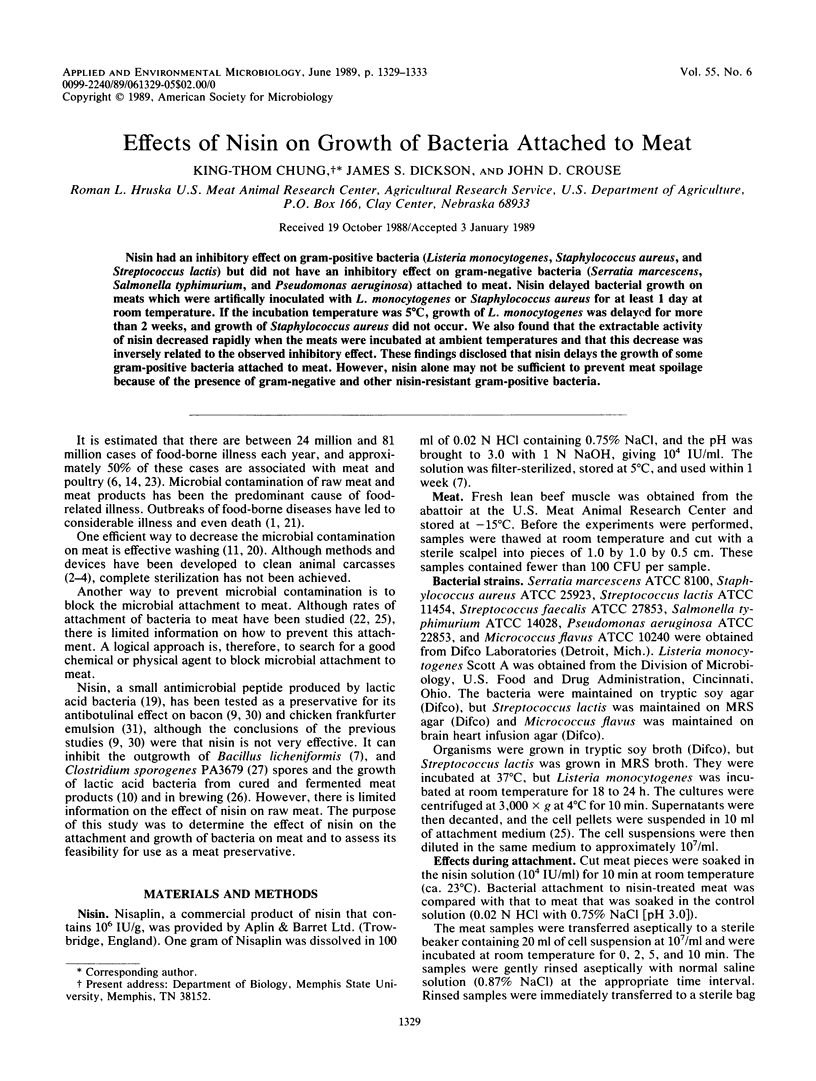
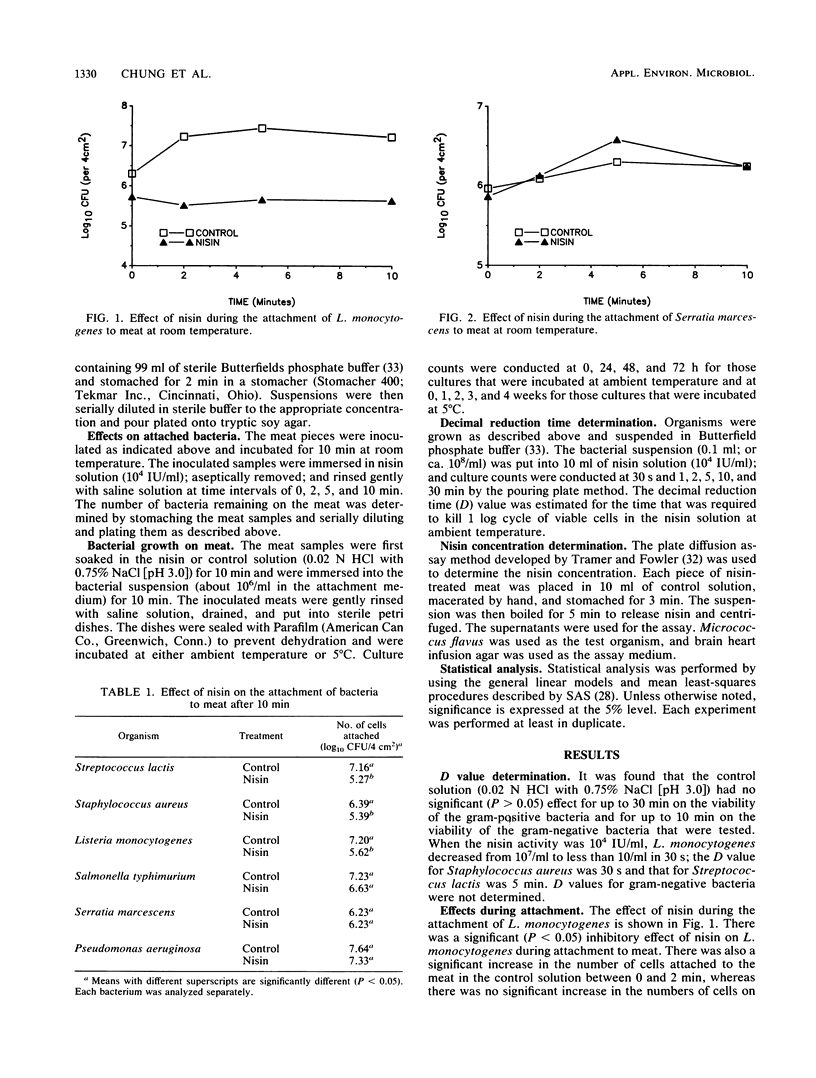
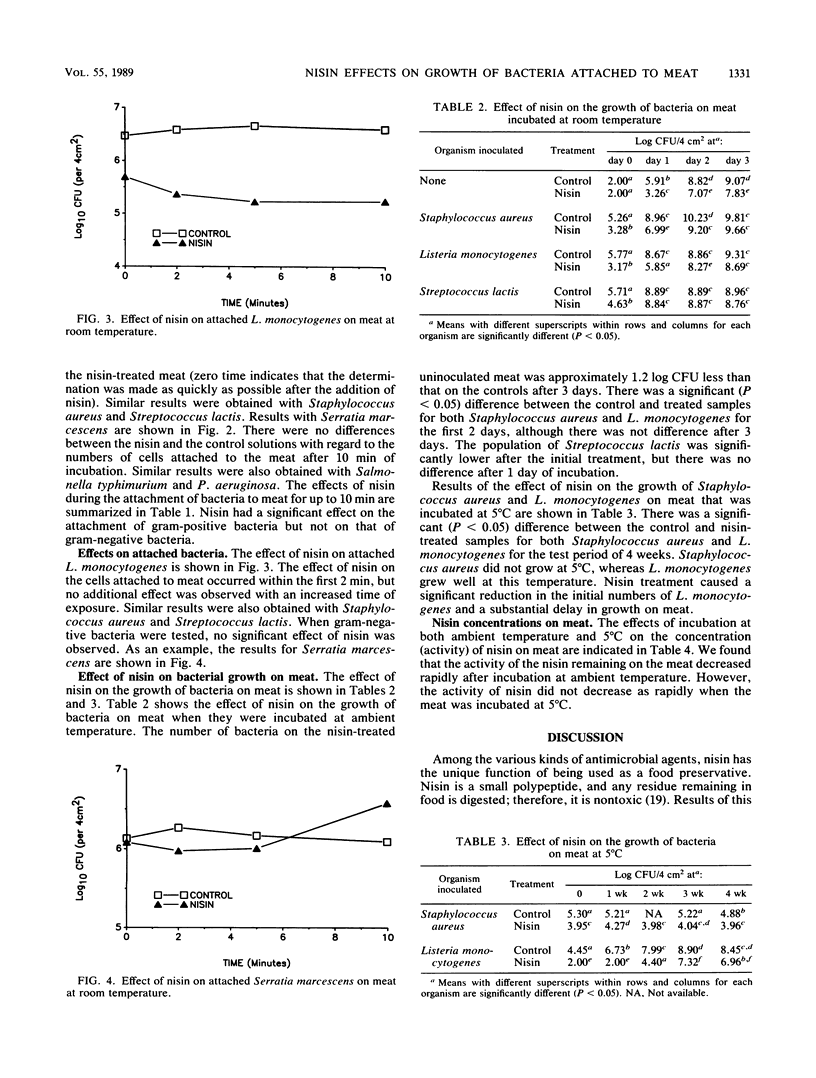
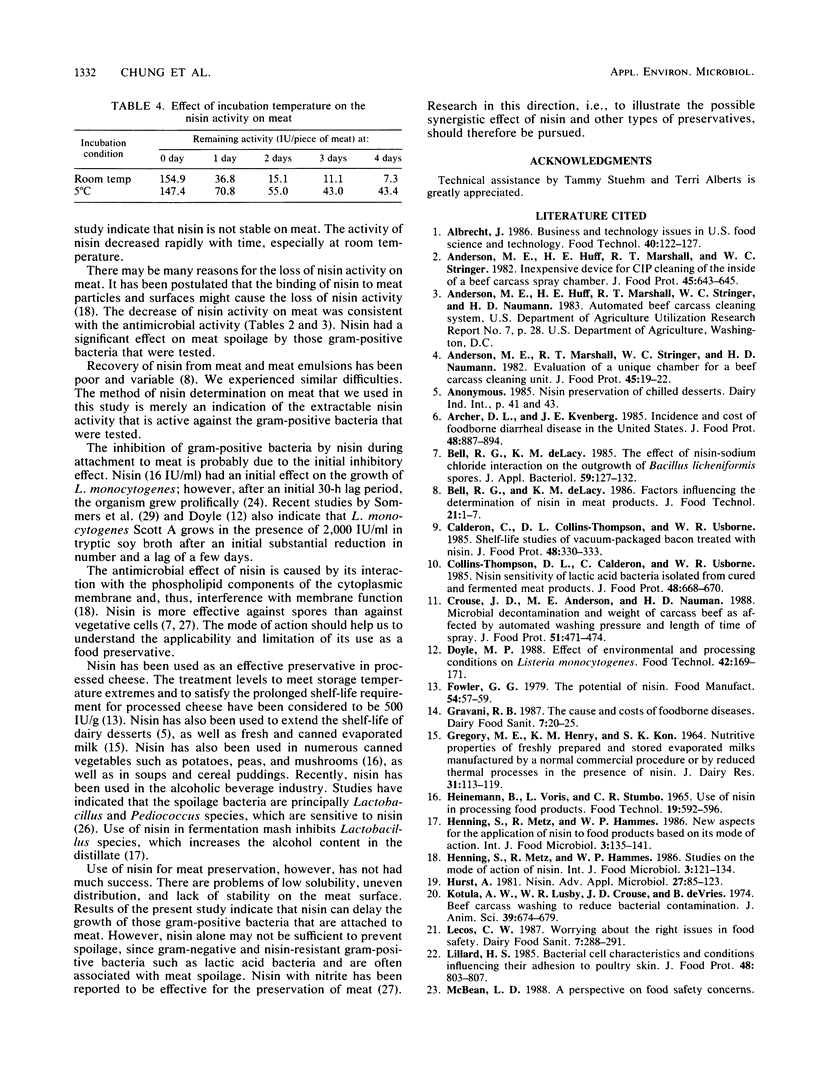
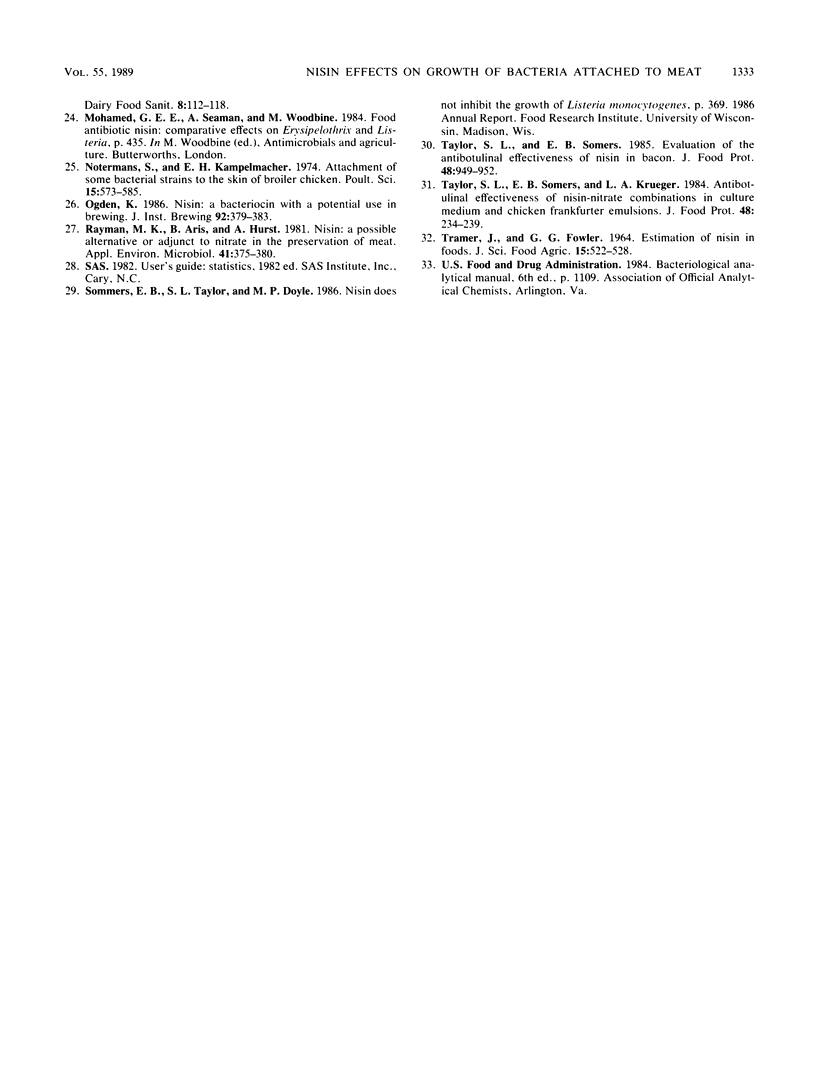
Selected References
These references are in PubMed. This may not be the complete list of references from this article.
- Notermans S., Kampelmacher E. H. Attachment of some bacterial strains to the skin of broiler chickens. Br Poult Sci. 1974 Nov;15(6):573–585. doi: 10.1080/00071667408416148. [DOI] [PubMed] [Google Scholar]
- Rayman M. K., Aris B., Hurst A. Nisin: a possible alternative or adjunct to nitrite in the preservation of meats. Appl Environ Microbiol. 1981 Feb;41(2):375–380. doi: 10.1128/aem.41.2.375-380.1981. [DOI] [PMC free article] [PubMed] [Google Scholar]


